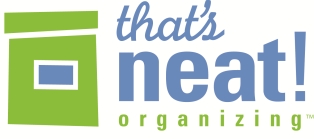Want to start the year off right? Enjoy this post by my cousin and guest blogger, Janna.
I promise if you adopt this simple, no-fail, multi-step program you will soon find yourself well on your way to a whole new…
Wow! Now that’s some promise.
How many ads with similar claims have we all recently heard? Ads that promise us a new body, a new job, a whole new whatever if only we would buy into their promises. And, why is it that this rash of similar messages always seem to crop up around the New Year?
Here’s my theory: these ads pray on our weaknesses. We all have them. And, right after the holidays many of us focus on these weaknesses and resolve to make significant changes. But why is it that our resolutions don’t seem to last? Personally I think it’s because we fail to understand that significant, positive changes are only successful if we adapt lifestyle changes. But to do this successfully, we must attack these tasks with know-how.
Well, I don’t know about you, but honestly the only one who would really know how to make changes for me – is me. And the only way they were going to work in my life is to work them into my life.
For me, to adapt real lifestyle changes, would mean organizing those changes and integrating them into my daily life. Hey, that’s what I’m good at – right?
Well, I decided to put it to the test.
For years I’d carried around an extra 25 to 30 pounds of weight. I’d lose some of it only to gain most of it back. It was one of my biggest hurdles. Then one day it hit me: I needed to organize a healthy lifestyle into my daily routine. Honestly, once I realized that’s all I had to do – apply what I’m good at to my problem – I could tackle it once and for all because it made sense to me.
First, I hired a professional trainer to get me started. Hiring a pro can often be the key to success in any situation. I made my appointments with her early in the mornings, that way I could work her into my day before my work day started. She gave me valuable information about nutrition, including how and what to eat and target percentages of fats, carbs and protein intakes for the day. She introduced me on to a great online program where I could input what I ate into a daily log that I keep on my computer. That’s easy - I’m in front of my laptop a good part of the day anyway.
But, the most valuable thing the trainer did for me was to tell me that I wouldn’t need her for long . We’d work together for a while (I met with her 2 days a week at first) and then she’d cut me loose.
Well she did her job – and I did mine. I hit the gym 4 – 5 times a week, still do. Early mornings work best for me. I gave myself a year to hit my new target weight but did it in 7 months. And not with a false promise but with common sense, good advice and a reasonable time line.
Since August I’ve kept it off and I plan to keep it off. And you know what? It’s easy. It’s easy for several of reasons: I adopted these changes into my everyday life; made lifestyle changes; and I did it because I applied something I’m good at – organizing - to my problem.
My point? Figure out how to organize the things you need and want to do into your daily life. The things you need to do will become second nature because you made needed lifestyle changes. And the things you want to do? They are your rewards for doing so.
BTW, I do have a 12-step (or rather – 12 month) process for you to ponder.
Stay tuned and Happy New Year!
-Janna

















